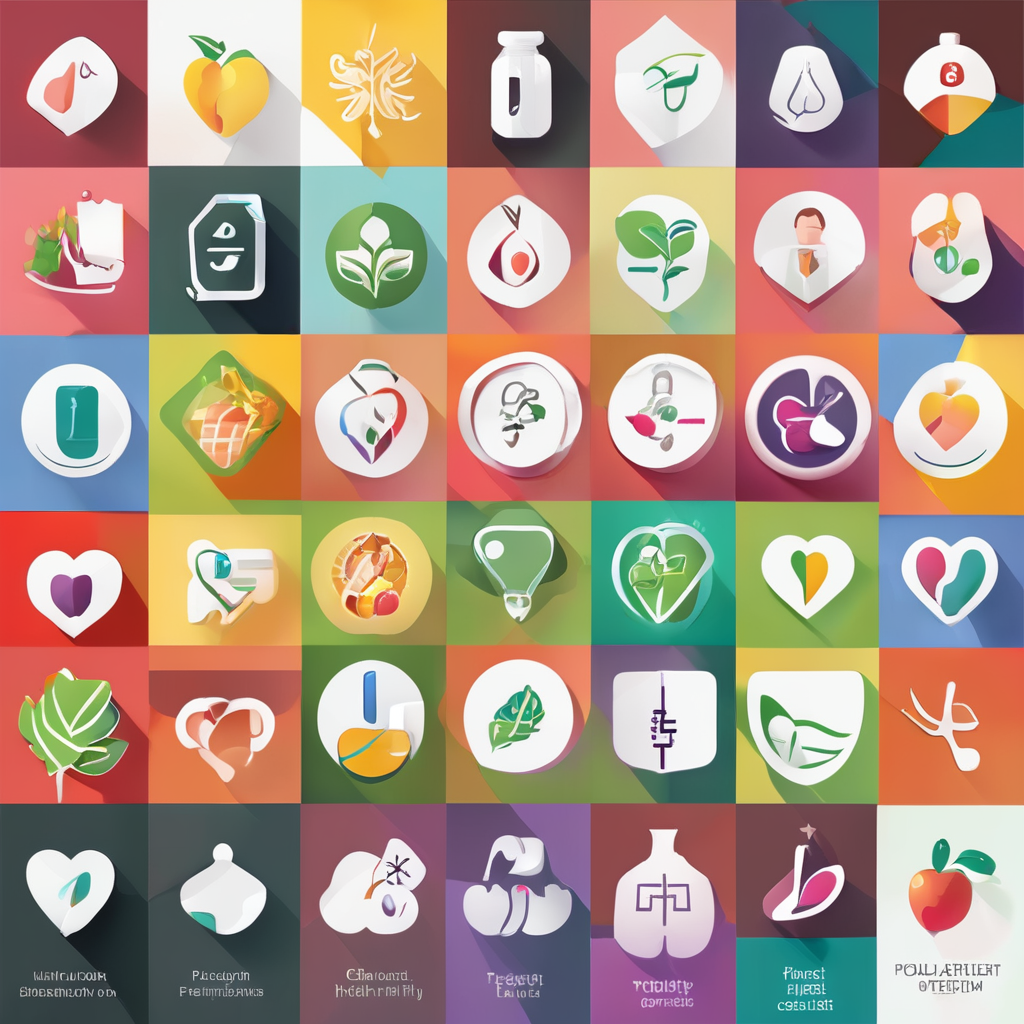Unlocking Heart Health: How a Low-Salt Diet Can Help Control Hypertension
Understanding Hypertension and Its Risks
Hypertension, or high blood pressure, is a silent killer that affects millions of people worldwide. It is a major risk factor for heart disease, stroke, and kidney disease, making it one of the most significant health concerns of our time. High blood pressure occurs when the force of the blood against the artery walls is too high, straining the heart and arteries. This condition can lead to severe complications if left unmanaged.
According to health experts, high blood pressure is defined as having a systolic pressure over 130 mmHg or a diastolic pressure over 80 mmHg. The good news is that hypertension is one of the most preventable and treatable health conditions, and dietary changes play a crucial role in its management.
Have you seen this : Unlocking the Perks: How a Gluten-Free Diet Can Enhance Life for Those with Non-Celiac Gluten Sensitivity
The Impact of Sodium on Blood Pressure
Sodium, a key component of salt, is a major determinant in increasing blood pressure. When you consume high amounts of sodium, your body retains fluid, which raises the volume of blood circulating through your arteries. This increased volume puts extra pressure on your arteries, leading to higher blood pressure.
Studies have consistently shown that reducing sodium intake can significantly lower blood pressure. For instance, a review of 33 studies found that reducing daily sodium intake by around 3g of salt can lower systolic blood pressure by an average of 5 mmHg and diastolic blood pressure by about half as much in people aged 50-59[1].
This might interest you : Discover How a Plant-Based Diet Can Alleviate Symptoms of Ulcerative Colitis: Unveiling the Benefits
Benefits of a Low-Sodium Diet
Adopting a low-sodium diet can have numerous health benefits, particularly for those with hypertension.
Lowers Blood Pressure
One of the most significant benefits of a low-sodium diet is its ability to lower blood pressure. Research by the Royal College of Physicians has shown that even a modest reduction in salt intake over a prolonged period can lead to a fall in blood pressure. This reduction can be seen within weeks, making it a quick and effective way to manage hypertension[1].
Slows Kidney Disease
For people with kidney disease, reducing sodium intake is crucial. The kidneys play a vital role in removing excess sodium from the body, and high sodium levels can exacerbate kidney disease. Studies suggest that restricting sodium intake can help reduce the progression of chronic kidney disease[1].
Reduces Bloating and Headaches
High salt levels can cause bloating and headaches due to the expansion of blood vessels. By lowering blood pressure, a low-sodium diet can also reduce the frequency of these symptoms. A study by Johns Hopkins University found that reduced sodium intake had the added benefit of reducing headaches in participants[1].
Reduces Dehydration
Interestingly, high sodium intake can lead to dehydration despite increased fluid consumption. Reducing salt intake can help improve hydration levels, as seen in a study on young adults’ drinking habits[1].
The DASH Diet: A Comprehensive Approach to Heart Health
The Dietary Approaches to Stop Hypertension (DASH) diet is a well-researched and effective dietary strategy designed to help manage and prevent high blood pressure.
What is the DASH Diet?
The DASH diet emphasizes the consumption of nutrient-rich foods such as fruits, vegetables, whole grains, and foods rich in calcium, potassium, and magnesium. These nutrients are known to lower blood pressure and improve overall heart health. The diet also recommends moderate intake of lean protein like fish, skinless chicken, and beans, while limiting red meat, salt, added sugars, and saturated fat[2].
Key Components of the DASH Diet
Here is a detailed breakdown of the DASH diet’s components:
| Food Group | Servings per Day | Serving Size Examples |
|---|---|---|
| Vegetables | 4-5 | 1/2 cup cooked, 1 cup raw |
| Fruits | 4-5 | 1 medium fruit, 1/2 cup fresh/frozen/canned |
| Low-fat Dairy | 2-4 | 250 mL milk, 200g yoghurt |
| Whole Grains | 6-8 | 1 slice bread, 1/2 cup cooked rice/pasta |
| Lean Meats | Fewer than 2 | 90g cooked lean meat, 90g skinless poultry/fish |
| Legumes, Nuts, Seeds | 4-5 per week | 30g unsalted nuts, 1 tablespoon seeds |
| Sweets and Added Sugars | 5 or fewer per week | 1 tablespoon sugar/jam, 250 mL soft drink |
| Sodium | Maximum 2,300mg daily | 1 teaspoon of salt |
Impact on Blood Pressure
The DASH diet has been shown to significantly lower blood pressure. A meta-analysis found that the DASH diet reduced systolic blood pressure by 6.74 mmHg and diastolic blood pressure by 3.54 mmHg, with the greatest reductions seen in those who consumed the least salt[4].
Additional Health Benefits
Beyond lowering blood pressure, the DASH diet offers several other health benefits:
- Reduces the Risk of Certain Cancers: Studies suggest that the DASH diet may lower the risk of developing certain types of cancer, including colorectal and breast cancer[2].
- Lowers Cholesterol and Reduces Heart Disease Risk: The DASH diet has been found to lower LDL (bad) cholesterol levels and reduce the risk of heart disease and stroke[2].
- Lowers the Risk of Type 2 Diabetes: The diet’s effect on insulin sensitivity and glycemic control makes it a healthy choice for people with prediabetes, type 1, and type 2 diabetes[2].
- Supports Healthy Weight Loss: Although not designed for weight loss, the DASH diet can lead to unintentional weight loss due to its focus on nutrient-dense foods and reduced intake of high-fat and sugary foods[2].
Practical Tips for Reducing Sodium Intake
Reducing sodium intake is easier than you think, and here are some practical tips to help you get started:
Choose Low-Sodium Recipes
Opt for meals prepared with less salt and use herbs and spices like garlic, turmeric, and paprika for flavor. Here are some low-sodium recipe ideas:
- Grilled Chicken with Herbs: Marinate chicken in a mixture of olive oil, garlic, and herbs, then grill until cooked.
- Vegetable Stir-Fry: Stir-fry a variety of vegetables like broccoli, bell peppers, and carrots with minimal oil and no added salt.
- Lentil Soup: Cook lentils with vegetables and spices, avoiding any salt or using salt substitutes.
Skip the Salt Shaker
Avoid adding extra salt to your meals. Instead, experiment with salt substitutes if needed, but consult your healthcare provider before using them, especially those containing potassium.
Read Food Labels
Look for products with 200 milligrams of sodium or less per serving. Here are some tips for reading food labels:
- Check the Sodium Content: Always check the nutrition label for sodium content.
- Choose Low-Sodium Options: Opt for low-sodium versions of your favorite foods.
- Limit Ready-to-Eat Meals: Ready-to-eat meals often contain high levels of sodium, so it’s best to prepare meals at home.
Prepare Meals at Home
Cooking at home allows you to control the amount of salt and other ingredients in your meals. Here are some benefits of home cooking:
- Control Over Ingredients: You can choose the amount of salt and other ingredients that go into your meals.
- Healthier Options: Home-cooked meals are generally healthier and lower in sodium compared to restaurant or ready-to-eat meals.
- Cost-Effective: Cooking at home can be cost-effective and allows you to prepare meals in bulk.
Lifestyle Interventions to Support Heart Health
While dietary changes are crucial, lifestyle interventions also play a significant role in managing hypertension.
Exercise Regularly
Regular exercise is essential for managing blood pressure. Here are some tips:
- Aim for 150 Minutes: Aim for at least 150 minutes of moderate aerobic activity each week, such as brisk walking or cycling.
- Incorporate Strength Training: Include strength training exercises to build muscle and improve overall health.
- Stay Active: Stay active throughout the day by taking short walks and avoiding sedentary activities.
Achieve a Healthy Weight
Excess weight is a significant risk factor for hypertension. Here are some tips for achieving a healthy weight:
- Set Realistic Goals: Set realistic weight loss goals and work towards them gradually.
- Combine Diet and Exercise: Combine a healthy diet with regular exercise to achieve sustainable weight loss.
- Seek Professional Help: If needed, seek help from a healthcare provider or a registered dietitian to create a personalized weight loss plan.
Managing hypertension through a low-sodium diet is a powerful and effective strategy. By understanding the impact of sodium on blood pressure, adopting the DASH diet, and making practical lifestyle changes, you can significantly reduce your risk of cardiovascular events.
As registered nutritionist Katharine Jenner notes, “If you have raised or high blood pressure, a low sodium diet could literally be a lifesaver. Moving away from high salt diets means you are more likely to have less processed and takeaway foods. This means your diet is likely to be richer in more nutritious ingredients and that can only be a good thing.”[1]
By making these changes, you are not only lowering your blood pressure but also improving your overall heart health and reducing the risk of various diseases. So, take the first step today towards a healthier, happier you.











